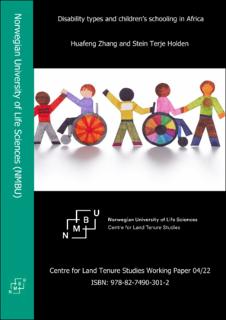| dc.description.abstract | The Sustainable Development Goals (SDGs) set up by the United Nations include an overarching principle of “leaving no one behind” and aim for, among other goals, equal access to education for children with disabilities. Our study contributes to the knowledge on the school enrolment of disabled children with different disability types, with a focus here on eight countries in Sub-Saharan Africa. Comparing the situation with children without disabilities as a benchmark, we assess early school enrolment for young children below ten years old, school enrolment for older children aged 10–17 years old, and the dropout rates of children from school. We perform our analysis as a natural experiment where different types of disabilities are considered as random treatments, which allows us to assume that the average deviation in certain school performance indicators from the average for non-disabled children is a result of the disability type, specifically vision, hearing, walking, intellectual capacity, and multi-disability.
Our study finds that, compared with non-disabled children, children with vision and hearing disabilities do not lag behind in school enrolment. In contrast, children with walking disability have a higher risk of starting school late. Children with intellectual disabilities are less likely to enrol in school, less likely to remain enrolled, and more likely to drop out than their counterfactual peers. Children with multiple disabilities tend to experience the most severe challenges in enrolling at school, both at a young age and later. However, once enrolled in school, children with multiple disabilities are not more likely to drop out earlier than other children.
Based on the first and probably the only large-scale application to date of the standard Washington Group Child function module as a disability measurement tool, our study is the first comprehensive multi-country study of disabled children’s schooling in Sub-Saharan Africa based on recent nationally representative data. | en_US |

